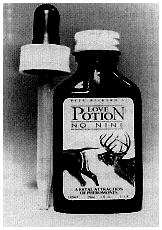Cripple
Rodrigo Rey Rosa
Esther Allen
Translator
(New Directions)

They determine to try again, and we find ourselves wondering what other bodily parts could they possibly be FedExing to the cacique. Hand? Ear? Eye? Nose? Brain? Membrum Vitale? Nope: the feet have it; or, to put it bluntly, the right foot gets it in the neck.
Don Carlos does develop a smidgen of guilt when he sees what Fats Waller used to call the "pedilict primitive" packed in ice, resting on the kitchen table. In the accompanying note, Juan begs him to keep it in the freezer just in case they can get someone to glue it back on when he gets out of the tank.
It's a pretty disgusting story line, if you ask me, but it only runs a bit over 100 pages, the type is large, and there is some interest in what will happen after Juan gets bought out of bondage by the old man, fitted with a fancy prosthesis, awarded an inlaid cane or two, and sent off to Tangiers with Ana Lucía of the lovely thighs.
Chance preys heavily on The Cripple: the Sephardi, one of the original kidnappers, just happens to be running a tourist restaurant in Tangiers, but we're not sure if the Sephardi recognizes Juan when he lumbers in for supper with Ana. There are a few trembling brows and moments of checking out the cane --- but nothing more is said about it.
Ditto when Juan goes back to Guatemala, visits another of the malefactors. "He walked past the little table, close to the other man, but didn't raise the cane to strike him." All Juan can think of was the fact that "he wanted no descendants."
As one may guess by the story line and the general malaise, author Rosa is a Paul Bowles fan (Bowles has translated several of his previous novels into English). So when they go out to eat in Tangiers, Juan meets Bowles, takes him to the aforementioned restaurant where they discuss his short stories.
Perhaps it is a tribute, but if I were Bowles I would be a tad offended. The author has him yawn and damn near fall asleep at the table. We're not sure if it is the company or the hour.
Still, how would you like your memento mori to be a shot of you practically face-down in the flan?
Hunting
Strategies for Taking
Whitetails During
Prime Time
Gerald Bethge
Editor
(Lyons Press)

Of all classic stories, this one is an excellent example of what the rut (also called "the itch") can do to an otherwise sane man. However, in 1950, our public library would barely give access to the original, never a translation. Never will I forget the triumph when I finally rendered it on my own --- my first piece of lusty writing gleaned from the eccentric language that was known as Middle English. (For those of you who wish to know more, go here.)
 The book makes no bones about the advantage of stalking a buck when his heart is fancy-free, catching him, in a manner of speaking, with his pants down. The fifteen authors represented here rise at the ungodly hour of three A.M. or so, go out into the snow-powdered fields, and lie in a blind with shotgun and a thermos-full of firewater just to catch two deer busy doing the beast with two backs.
The book makes no bones about the advantage of stalking a buck when his heart is fancy-free, catching him, in a manner of speaking, with his pants down. The fifteen authors represented here rise at the ungodly hour of three A.M. or so, go out into the snow-powdered fields, and lie in a blind with shotgun and a thermos-full of firewater just to catch two deer busy doing the beast with two backs.
There is a great deal here about "scrapes," "decoys," and "trickle rubs." Bucks rattle and grunt, huntsmen, in response, issue "fawn-bleating calls," "estrus-bleats," "fawn-distress estrus whines," and my favorite, "hot doe bleats" (not to be confused, we suspect, with hot-dog buns).
Those who want their venison hot and bloody must scout out antler rubs, second ruts, trickle ruts, listening for "buck clicking." Bucks in love, apparently, come to be just as noisy as Chaucer's poor, poker-ridden Absolon.
We'd be the last to claim, after plowing though Advanced Rut Hunting, that the technology of deer-love is simple. For instance, there are a dozen different techniques for making use of scrapes, markings left in the terrain as signals for does and other bucks. However, if it all stumps you, you can always purchase a spray called "Love Potion No. Nine." It bills itself as "A Fatal Attraction of Pheromones"
 Those of our readers who plan after this one to be seeding the woods with love potions and hot doe bleats should be reminded of Ed Zern's warning. One should be careful when using attractants, he tells us, for it is possible that the buck may get so het up that he will respond by trying to mount the hunter, much to the distress of both. There are about forty photographs reproduced here. Twenty are of a sportsman holding up the head of a defunct buck. They pull up on the rack so that the beast can, presumably, smile at the camera.
Those of our readers who plan after this one to be seeding the woods with love potions and hot doe bleats should be reminded of Ed Zern's warning. One should be careful when using attractants, he tells us, for it is possible that the buck may get so het up that he will respond by trying to mount the hunter, much to the distress of both. There are about forty photographs reproduced here. Twenty are of a sportsman holding up the head of a defunct buck. They pull up on the rack so that the beast can, presumably, smile at the camera.
The rub comes --- not necessarily an "antler rub" --- from the fact that so many of us grew up feasting on early Walt Disney. We now have a thing about deer. We know that a big father deer will have a kindly mama deer who, in turn, will whelp a tiny Bambi of the big eyes. Remember when they shot Bambi's sire in a gush of woe and blood? That alone should get the animal-rights activists busy picketing any and all of the authors represented here.
